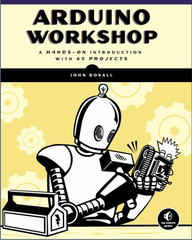As part of a university course, David Sharfi and fellow group members were tasked with creating an electronic device, and resulted with a great example of an electronics "Rubik's Cube" game. This involves a large number of LEDs all driven by the Arduino via shift registers, which sounds complex but with some planning is quite simple.
By using nine LEDs on each face of the cube the state of play can easily be understood, and buttons on all faces of the cube are used to "move" the cube's pieces in either axis. Check out the following video for a demonstration:
This is an incredibly imaginative and interesting project, and along with the Arduino sketch David's group have also provided the schematic and details required to make the PCBs to reproduce your own game. For more information visit the project's Instructable page. And for more, we're on facebook, twitter and Google+, so follow us for news and product updates as well.
If you're interested in this project, or building your own RGB LED cube - check out our 4x4x4 RGB LED Cube Kit:
It's easy to construct and use, and with an onboard Arduino-compatible board the cube can be used to display all sorts of data or create visual effects. It's easily controlled via simple text commands via the USB port - or write your own Arduino sketch. It's incredibly customisable and there's so much more. For more information and to order, visit the CUBE4 page.























